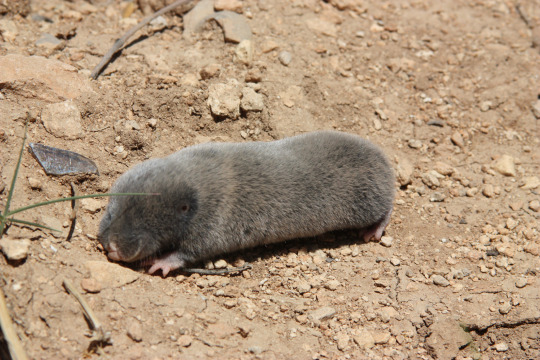#spalacids
Text
Uncharismatic Fact of the Day
For the Palestine mole rat, which lives almost entirely underground, finding other members of their species. Fortunately, this species has a special way of attracting potential mates: when the breeding season starts, males and females drum their heads against the roof of their tunnels. This sends vibrations through the ground that lets other mole rats know exactly where they are.

(Image: A Palestine mole rat (Nannospalax ehrenbergi) by Zuhair Amr et al.)
If you send me proof that you’ve made a donation to UNRWA or another organization benefiting Palestinians, I’ll make art of any animal of your choosing.
Remember, the donation can be in any amount-- every dollar counts!
#palestine mole rat#free palestine#Rodentia#Spalacidae#small-bodied mole rats#spalacids#mole rats#rodents#mammals#uncharismatic facts
383 notes
·
View notes
Text

Chinese Zokor (Eospalax fontanierii)
Family: Spalacid Family (Spalacidae)
IUCN Conservation Status: Least Concern
Found only in central and eastern China, the Chinese Zokor is a species of relatively large burrowing rodent that, though believed to be fairly common, is rarely encountered alive as it spends its entire life underground, with molehill-like mounds of displaced soil being the only aboveground indicator that a Zokor population is present. Digging by breaking apart compacted soil with their large incisors and pushing it back using their curved claws and broad spade-like feet, members of this species live alone and build their burrows in treeless grasslands, constructing expansive networks of tunnels with "feeding tunnels" near the surface used to access the subterranean vegetation (such as tubers and roots) on which they feed and numerous chambers located further underground which are used for sleeping, raising young and storing excess food for use in times of scarcity. Chinese Zokors breed in the spring; when receptive to mating males will begin to tunnel away from their main burrow until they intersect the tunnel of a female, with mated females producing a single litter of 2-3 young after a gestation period of around 30 days and providing their offspring with milk and shelter until they become independent at around 50 days old. Throughout much of their range Chinese Zokors have historically been persecuted as pests due to their habit of damaging the roots of crops and leaving mounds of soils in gardens and public parks, and while it is true that they reduce the aboveground growth of plants by feeding on their roots it has also been found that by forcing soil from deep underground to the surface they provide an essential service to the ecosystems they inhabit, providing soil-dwelling organisms with oxygen, cycling nutrients through the soil and clearing small patches of land that can be colonised by less competitive plants.
--------------------------------------------------------------------------
Image Source: https://www.inaturalist.org/taxa/74299-Eospalax-fontanierii
#Chinese Zokor#Chinese zokor#rodent#rodents#zoology#biology#mammalogy#animal#animals#wildlife#Asian wildlife#Chinese wildlife#mammal#mammals#nature#fossorial animals#soil organisms#zokor#zokors
21 notes
·
View notes